How to Store Outdoor Solar Lights for the Winter
Outdoor solar lights are a sustainable and cost-effective way to illuminate gardens, pathways, and driveways, harnessing solar energy to power solar LED lights without increasing electricity bills. However, in regions with harsh winters or limited sunlight, storing solar-powered outdoor lighting during the colder months can extend their lifespan and maintain performance. Proper storage protects solar panels, batteries, and other components from freezing temperatures, moisture, and corrosion. This comprehensive guide provides step-by-step instructions, expert tips, and unique strategies to safely store your solar outdoor lighting for the winter, ensuring they’re ready to shine come spring.
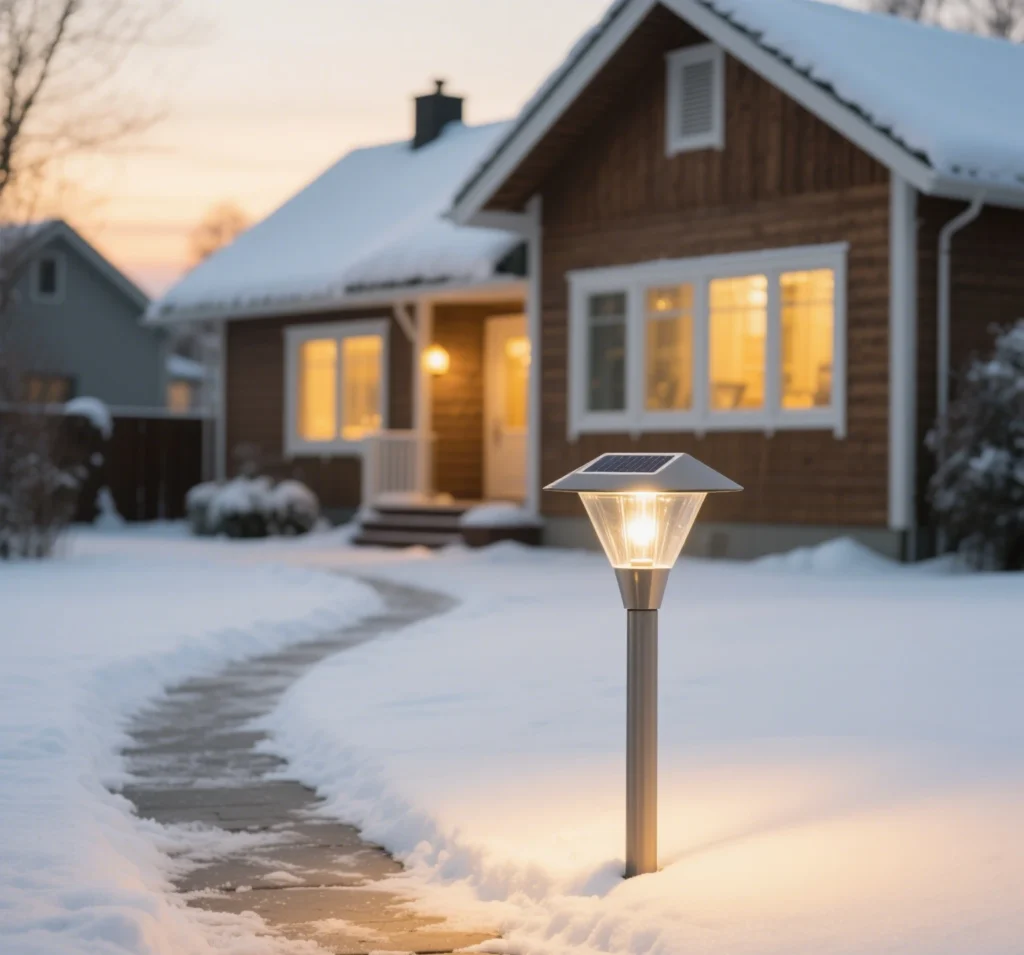
Why Store Outdoor Solar Lights in Winter?
Winter conditions, such as freezing temperatures, snow, and reduced sunlight, can strain solar lighting systems. Batteries, especially nickel-metal hydride (NiMH) or lithium-ion, degrade faster in extreme cold, losing capacity or failing entirely. Solar panels exposed to snow or ice may crack, and moisture can damage wiring or light fixtures. A 2024 study on solar photovoltaic systems found that prolonged exposure to subzero temperatures can reduce battery lifespan by up to 30%.
Storing solar garden lights, solar pathway lights, or solar security lights during winter minimizes these risks, saves replacement costs, and ensures optimal performance when reinstalled. This is particularly important in northern regions where sunlight drops to 4–6 hours daily, insufficient to charge solar-powered lights effectively.
Step-by-Step Guide to Storing Outdoor Solar Lights
Step 1: Assess Your Lights and Local Climate
Before storing, evaluate whether storage is necessary. If you live in a mild climate with adequate sunlight (6+ hours daily), you may keep solar outdoor lights in place with regular maintenance. However, in areas with heavy snow, ice, or temperatures below 0°F (-18°C), storage is recommended for:
- Solar garden lights with delicate fixtures
- Solar pathway lights prone to snow accumulation
- Solar motion sensor lights with exposed wiring
- Solar LED spot lights in high-traffic areas
Check each light for damage, such as cracked solar panels or corroded battery compartments, to address repairs before storage.
Step 2: Turn Off and Disassemble the Lights
- Switch Off: If your solar-powered lights have an on/off switch, turn them off to prevent battery drain. For lights without switches, cover the solar panel to stop charging.
- Remove from Mounts: Detach solar garden lights from stakes, solar LED spot lights from walls, or solar pathway lights from the ground. Handle carefully to avoid damaging fixtures or wiring.
- Disassemble Components: If possible, separate the solar panel, battery, and light fixture. For integrated units, keep them intact but note the manufacturer’s disassembly instructions.
Step 3: Clean All Components Thoroughly
Cleaning prevents dirt and corrosion from damaging solar outdoor lighting during storage:
- Clean Solar Panels: Wipe solar panels with a soft cloth and mild soapy water to remove dirt, pollen, or bird droppings. Rinse and dry thoroughly to prevent water spots, which can reduce efficiency by up to 15%, per solar energy research.
- Clean Light Fixtures: Use a damp cloth to clean solar LED lights and housings, removing debris or grime. Avoid abrasive materials to protect lenses.
- Inspect Battery Compartments: Check for corrosion or leaks. Clean with a cotton swab dipped in vinegar, then dry completely.
Step 4: Remove and Store Batteries Properly
Batteries are the most vulnerable part of a solar lighting system in cold weather. To store them:
- Remove Batteries: Open the battery compartment and remove NiMH or lithium-ion batteries. Most solar garden lights use AA or AAA NiMH batteries, while solar security lights may use lithium-ion packs.
- Check Battery Health: Test batteries with a multimeter (1.2V for NiMH, 3.7V for lithium-ion when fully charged). If batteries are weak, consider replacing them before storage to avoid leaks.
- Store in a Cool, Dry Place: Place batteries in a plastic container or resealable bag and store at 50–70°F (10–21°C). Avoid freezing temperatures, as they can reduce battery capacity by 20–30%. Do not store batteries in the light fixture, as residual moisture can cause corrosion.
- Charge Periodically: Recharge batteries every 2–3 months using a compatible charger to maintain their health, as fully discharged batteries may become unusable.
Step 5: Protect Solar Panels and Fixtures
- Wrap Solar Panels: Cover solar panels with bubble wrap or a soft cloth to prevent scratches. Avoid plastic bags, which can trap moisture and cause damage.
- Store Fixtures Safely: Place solar LED lights and fixtures in padded containers or boxes to protect lenses and housings. For solar pathway lights with stakes, wrap sharp ends to prevent injury.
- Label Components: If storing multiple solar-powered lights, label parts to simplify reassembly in spring.
Step 6: Choose an Ideal Storage Location
Store your solar outdoor lighting in a dry, temperature-controlled environment, such as:
- A garage or basement with temperatures above 32°F (0°C)
- A climate-controlled storage unit
- An indoor closet or shelf away from humidity
Avoid damp basements or unheated sheds, as moisture and cold can damage solar panels and electronics. Ensure the storage area is free of pests that could chew wiring.
Step 7: Document and Organize
Create a checklist of stored components (e.g., solar panels, batteries, fixtures) and their condition. Take photos of your solar lighting system setup before disassembly to aid reinstallation. Store small parts like screws or connectors in labeled bags to prevent loss.
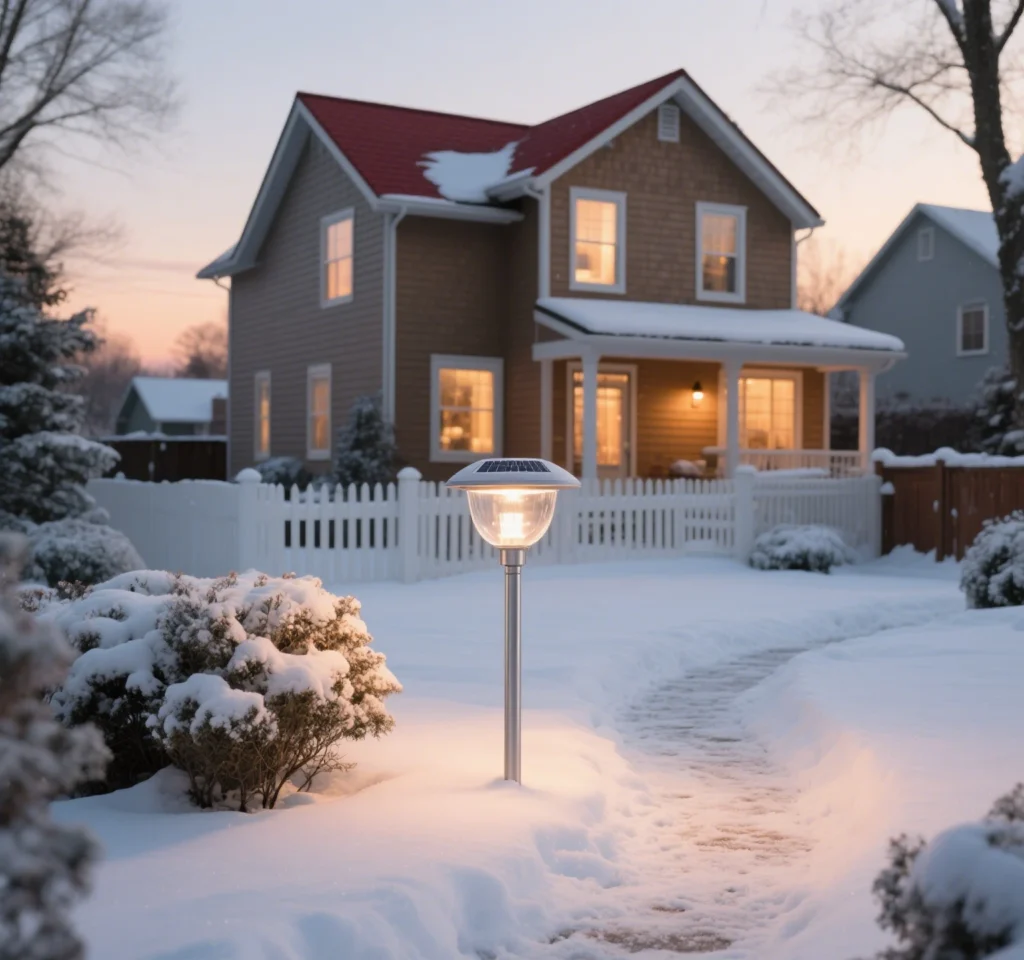
Expert Tips for Winter Storage
- Charge Batteries Before Storage: Fully charge batteries to 70–80% capacity to prevent deep discharge, which can reduce lifespan, according to battery maintenance guidelines.
- Use Silica Gel Packs: Place silica gel packets in storage containers to absorb residual moisture, protecting solar LED lights and electronics.
- Inspect Seals: Check weatherproof seals on battery compartments and reapply silicone sealant if needed to ensure solar-powered outdoor lighting is ready for reinstallation.
- Consider Partial Use: If some solar security lights are critical, leave them in place but monitor battery health and clean solar panels weekly to prevent snow buildup.
- Upgrade Components: Use winter storage as an opportunity to replace old NiMH batteries with high-capacity lithium-ion batteries for better performance in solar motion sensor lights.
Common Winter Storage Challenges and Solutions
Online forums like Quora often highlight practical concerns about storing solar outdoor lights. Here are solutions to common issues:
- Problem: Batteries Leak During Storage: Store batteries separately in a cool, dry place, and check for corrosion before storing. Use high-quality batteries from reputable brands like Bitpott to minimize risks.
- Problem: Cracked Solar Panels: Inspect solar panels for micro-cracks before storage. Wrap them carefully and avoid stacking heavy items on top.
- Problem: Forgotten Setup Details: Document your solar lighting system layout with photos or sketches to ensure accurate reinstallation in spring.
- Problem: Moisture Damage: Ensure all components are completely dry before storage. Use airtight containers and silica gel to prevent condensation.
- Problem: Battery Drain: If batteries lose charge during storage, recharge them every 2–3 months. Avoid using regular batteries, as they’re not suited for solar-powered lights.
Unique Storage Strategies
For a creative approach, consider modular storage solutions. Use stackable plastic bins with dividers to organize solar garden lights, solar pathway lights, and solar LED spot lights separately, making spring setup easier. Another innovative idea is to repurpose a fishing tackle box for small components like batteries and screws, as suggested in DIY communities, ensuring everything stays organized and accessible.
For solar motion sensor lights with smart features, download any app settings or firmware updates before storage to keep the system current. Brands like Bitpott offer cloud-based backups for smart solar lighting systems, simplifying reconfiguration.
Benefits of Proper Winter Storage
Storing solar-powered outdoor lighting correctly extends its lifespan and saves money. A single solar garden light can cost $20–100, and proper storage prevents the need for frequent replacements. By protecting solar panels and batteries, you maintain their efficiency, ensuring bright illumination when reinstalled. Additionally, solar energy reduces your environmental impact, with each light saving 30–50 kWh annually compared to traditional bulbs, per 2024 energy data.
Proper storage also minimizes e-waste. Recycling old batteries through local programs prevents hazardous materials from entering landfills, supporting sustainable practices.
Reinstalling Solar Lights in Spring
When winter ends, reinstall your solar outdoor lights with these steps:
- Inspect Components: Check solar panels, batteries, and solar LED lights for damage or corrosion.
- Clean Again: Wipe all parts to remove dust accumulated during storage.
- Test Batteries: Charge batteries fully and test with a multimeter to ensure they hold the correct voltage.
- Reinstall: Follow your documented layout to reposition solar pathway lights, solar security lights, or solar LED spot lights. Ensure solar panels are angled for optimal sunlight.
- Test Operation: Allow a full day of charging and test lights at night to confirm functionality.
Conclusion
Storing solar-powered outdoor lighting for the winter protects your investment and ensures reliable performance in spring. By cleaning solar panels, removing and storing batteries properly, and choosing a dry, temperature-controlled storage location, you can prevent damage from cold and moisture. With expert tips and creative storage solutions, you can streamline the process and address common challenges. Whether you’re storing solar garden lights, solar pathway lights, or solar motion sensor lights, proper care maintains their eco-friendly benefits and cost savings. Prepare your solar outdoor lighting for winter storage today to enjoy vibrant illumination when the seasons change.


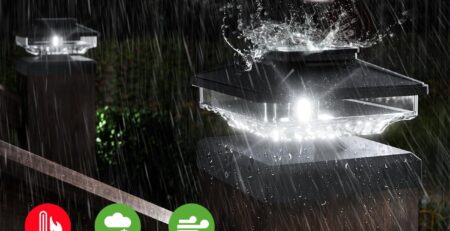
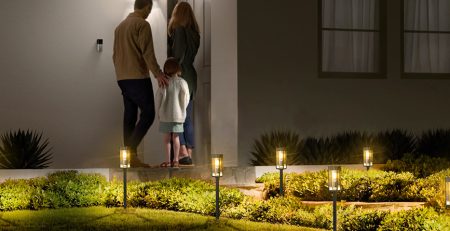

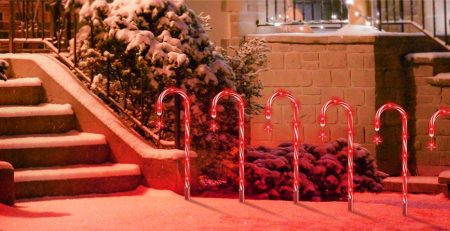
-1-3-450x231.webp)

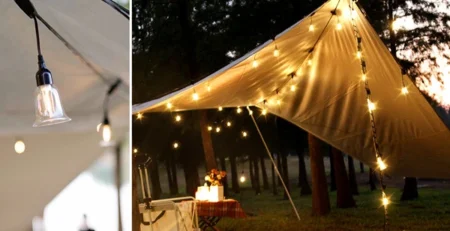
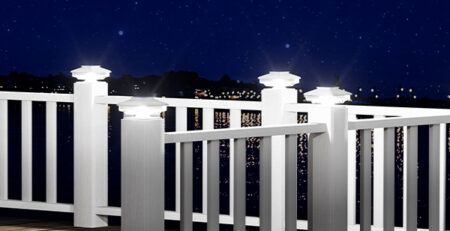
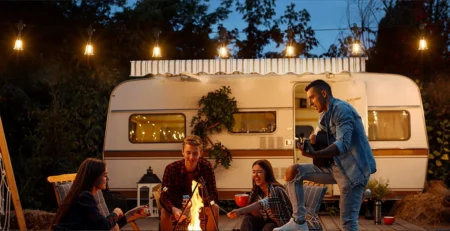
Leave a Reply